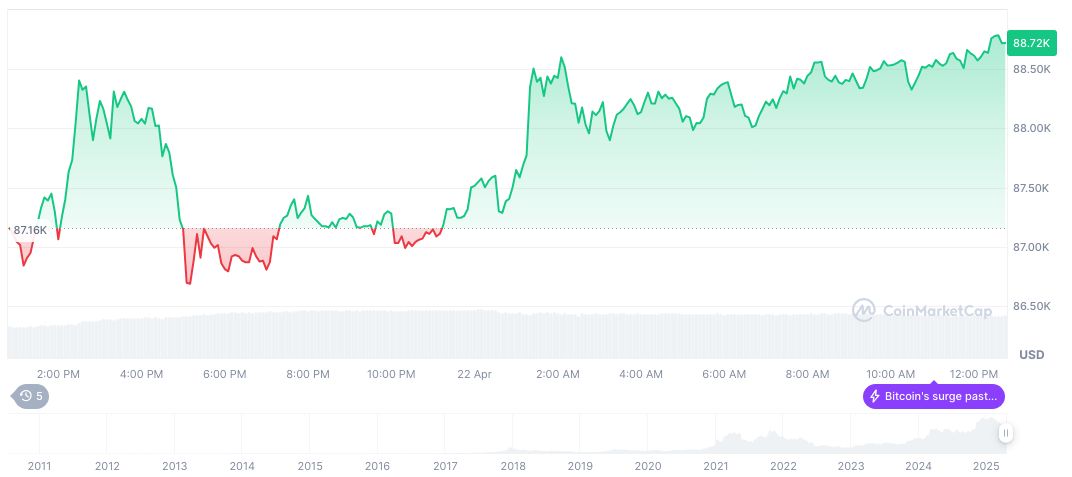- IMF lowers global GDP growth forecast to 2.8% for 2025.
- U.S. tariffs and policy uncertainty contribute significantly to the revised forecast.
- Possible market volatility with capital shifts towards safer assets like USD and gold.
The IMF’s outlook now projects global GDP growth at 2.8% for 2025, citing U.S. tariffs as a major factor.
The International Monetary Fund’s (IMF) revised projections highlight a significant drop in expected global economic growth for 2025, from 3.3% to 2.8%. This adjustment is attributed to tightening U.S. tariffs and heightened policy unpredictability. Such shifts underscore the IMF’s caution over ongoing trade tensions, as reflected in the World Economic Outlook – April 2025 Insights.
IMF Cuts 2025 Growth Forecast to 2.8%
Economic implications include possible capital outflows from risk assets like equities and high-beta cryptocurrencies, driven by increased market volatility. The risk-off sentiment might favor investments in more stable assets such as the USD and gold, reflecting broader market caution as discussed in the IMF World Economic Outlook Publications Portal.
Global growth is expected to decline and downside risks to intensify as major policy shifts unfold… Ratcheting up a trade war and heightened trade policy uncertainty may further hinder both short-term and long-term growth prospects.
“Global growth is expected to decline and downside risks to intensify as major policy shifts unfold… Ratcheting up a trade war and heightened trade policy uncertainty may further hinder both short-term and long-term growth prospects.” — IMF WEO April 2025
Cryptocurrencies and Markets Face Uncertain Future Amid Trade Tensions
Did you know? Previous IMF downgrades during the 2008 Financial Crisis led to significant market reductions across sectors, echoing the potential outcomes of current global economic uncertainties.
According to CoinMarketCap, Bitcoin (BTC) currently trades at $90,183.01, with a market cap of $1.79 trillion, reflecting a 24-hour trading volume rise of 35.62%. Notably, the coin has experienced positive price changes over a 30-day span, despite longer-term declines.

Insights from the Coincu research team suggest that the financial market may witness continued volatility if tensions persist. Historically, these elements, combined with macroeconomic instability, can lead to increased scrutiny on cryptocurrencies and potential regulatory challenges.























